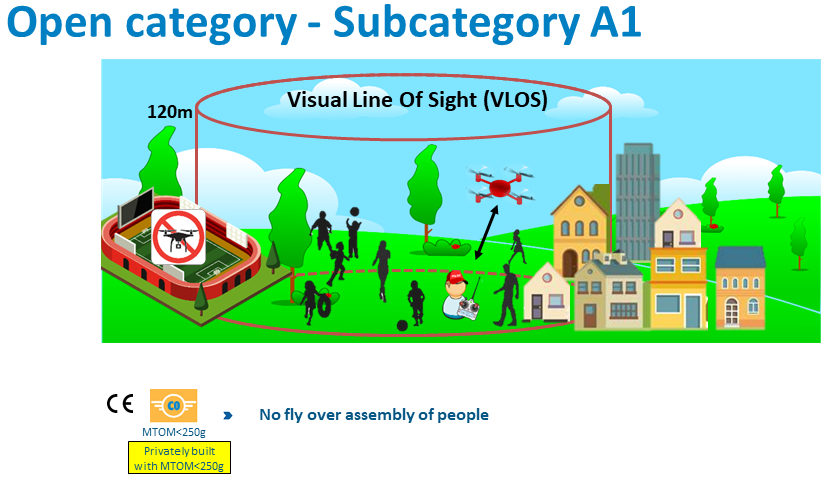The CAA have recently (on 05/11/20) published an update to the proposed UK regulations due to come in to force 01/01/21:
I've not identified any significant changes from the last update. Key points for me are as follows. I've restricted this to the legacy drone categories as there are no CE certified drones available yet:
I've not identified any significant changes from the last update. Key points for me are as follows. I've restricted this to the legacy drone categories as there are no CE certified drones available yet:
- Legacy drones (eg Mini 1 and 2) under 250g "flying weight" (not MTOM) with a camera can be flown indefinitely in the A1 category. This lets you fly in residential/commercial/recreational areas. You will need to register and get both a flyer ID and an operator ID. The only real restrictions are"no flight over assemblies of people" and respecting others privacy/safety. This is a significant change from existing rules as you can now generally fly in your back garden or at the local park if you have a sub 250g drone.
- Legacy drones between 250g and 500g (eg mavic air 1) can be flown in A1 category until 31 Dec 22 if you complete the A2 CofC. After 31 Dec 22 such drones will only be allowed to fly in A3 category (ie 150m away from people/buildings etc)
- Legacy drones between 500g and 2kg (eg Mavic Air 2, Mavic pro 1/2 etc) can be flown in A2 category (with the added restriction of maintaining 50m or more distance from uninvolved people) until 31 Dec 22 if you complete the A2 CofC. After 31 Dec 22, or without an A2 CofC, such drones will only be allowed to fly in A3 category.
- Typical maximum limits of VLOS are expected to be 500m horizontally (no real change from existing rules)
- Flying at night is OK, provided VLOS rules are adhered to (ie you have some lights on your drone you can see).
Last edited:




 The update is dated 5/11/20, but the rules only come in to force on 01/01/21.
The update is dated 5/11/20, but the rules only come in to force on 01/01/21.







